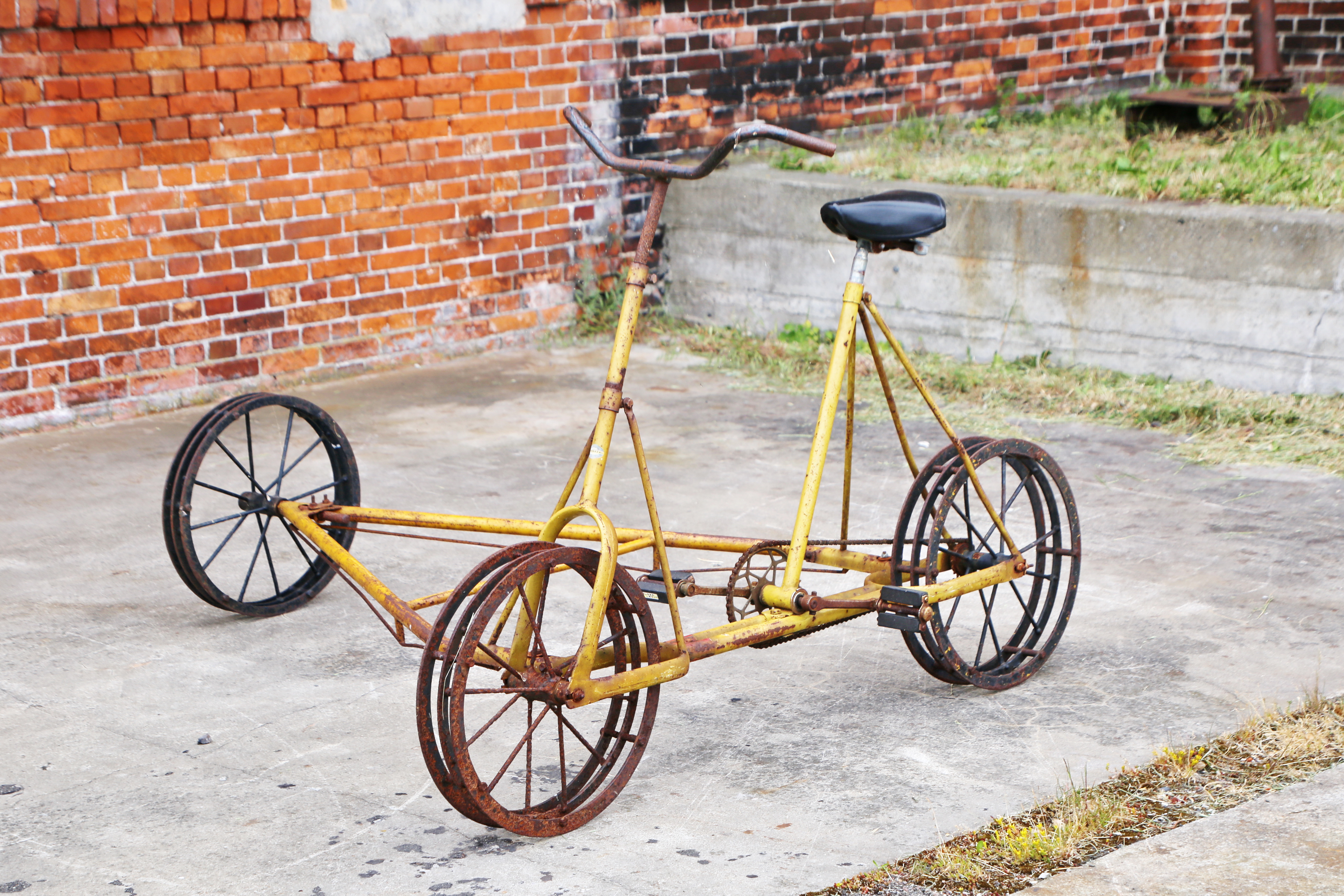|
Hotchkiss Bicycle Railroad
The Hotchkiss Bicycle Railroad was a purpose-built monorail on which a matching bicycle could be ridden. It was invented by Arthur Hotchkiss, and the first example was built between Smithville and Mount Holly, New Jersey, in 1892. It closed in 1897. Other examples were built in Norfolk from 1895 to 1909, Great Yarmouth, and Blackpool, UK from 1896. Smithville - Mount Holly In 1892, Arthur Hotchkiss received a patent for a bicycle railroad and contracted with the H. B. Smith Machine Company to manufacture it. The initial track ran from Smithville, in a nearly straight line, crossing the Rancocas Creek 10 times, and arrived at Pine Street, Mount Holly. It was completed in time for the Mount Holly Fair in September, 1892, and the purpose of the railway was supposed to have been enabling employees to commute quickly from Mount Holly to the factory at Smithville. Monthly commuter tickets cost $2.00 (equivalent to $ today). The record speed on the railway was 4.5 minutes (an aver ... [...More Info...] [...Related Items...] OR: [Wikipedia] [Google] [Baidu] |
Hezekiah Bradley Smith
Hezekiah Bradley Smith (July 24, 1816 – November 3, 1887) was an American inventor and a Democratic Party politician who represented New Jersey's 2nd congressional district in the United States House of Representatives for one term from 1879 to 1881. Birth, early career, and marriage Smith was born in Bridgewater, Vermont, on July 24, 1816. After completing an eighth grade education, he was trained as a cabinet maker and set up shop in a former tannery building. Smith left the Woodstock District in 1846, taking with him Eveline Verona English, whom he married in a civil ceremony in May 1846, in their Boston hotel room. Smith and his wife moved first to Manchester, New Hampshire, where Smith made a living carving wooden patterns while learning the machine business. In July 1846, their first child, Ella, was born. In the spring of 1847 in Manchester there was a scarlet fever epidemic known as 'ship fever', and Eveline took the child Ella and returned to Woodstock. They wo ... [...More Info...] [...Related Items...] OR: [Wikipedia] [Google] [Baidu] |
Shweeb
Shweeb is a proposed personal rapid transit network in New Zealand, based on human-powered monorail cars. The project prototype was originally designed and implemented in Rotorua, New Zealand, as a leisure attraction. The proposed Shweeb transit network relies on recumbent bicycle technology to power pods suspended from monorails. According to Shweeb Monorail Technology, the intent of their proposal is to "create a solution which provided the user with the same flexibility and comfort offered by the car but without the consequential costs - both direct financial and indirect health and environmental costs." The proposal envisions networks of monorail track providing point to point and commuter transit for urban areas. Proposals In September 2010, a proposal for development of an expanded network was chosen to receive funding from Google as part of project 10100. As of August 2017, there were no active proposals to utilise the system for public transportation although a "sport ... [...More Info...] [...Related Items...] OR: [Wikipedia] [Google] [Baidu] |
Draisine
A draisine () is a light auxiliary rail vehicle, driven by service personnel, equipped to transport crew and material necessary for the maintenance of railway infrastructure. The eponymous term is derived from the German inventor Baron Karl Drais, who invented his ''Laufmaschine'' (German for "running machine") in 1817, which was called ''Draisine'' in German (''vélocipède'' or ''draisienne'' in French) by the press. It is the first reliable claim for a practically used precursor to the bicycle, basically the first commercially successful two-wheeled, steerable, human-propelled machine, nicknamed hobby-horse or dandy horse. Later, the name draisine came to be applied only to the invention used on rails and was extended to similar vehicles, even when not human-powered. Because of their low weight and small size, they can be put on and taken off the rails at any place, allowing trains to pass. In the United States, motor-powered draisines are known as speeders while human- ... [...More Info...] [...Related Items...] OR: [Wikipedia] [Google] [Baidu] |
History Of Monorail
The term monorail or industrial monorail is used to describe any number of transport systems in which a chair or carrier is suspended from, or rides on, an overhead rail structure. Unlike the well-known duo-rail system, there are many rail-guided transport options which have been described as monorails, so that tracing the history presents a demarcation problem regarding what should be included and what should be omitted. Common usage appears to define a monorail as any rail-guided vehicle which does not employ the coning action of conventional adhesion railways to achieve directional stability. This would exclude rack railways and funicular railways. Another generally accepted rule is that the guideway or track must be narrower than the car/vehicle. Elevated, supported, cable propelled systems like the Cable Liner and MiniMetro are generally not considered to be monorails. Bearing in mind the pattern of development of conventional railways, different criteria and measures of ef ... [...More Info...] [...Related Items...] OR: [Wikipedia] [Google] [Baidu] |


